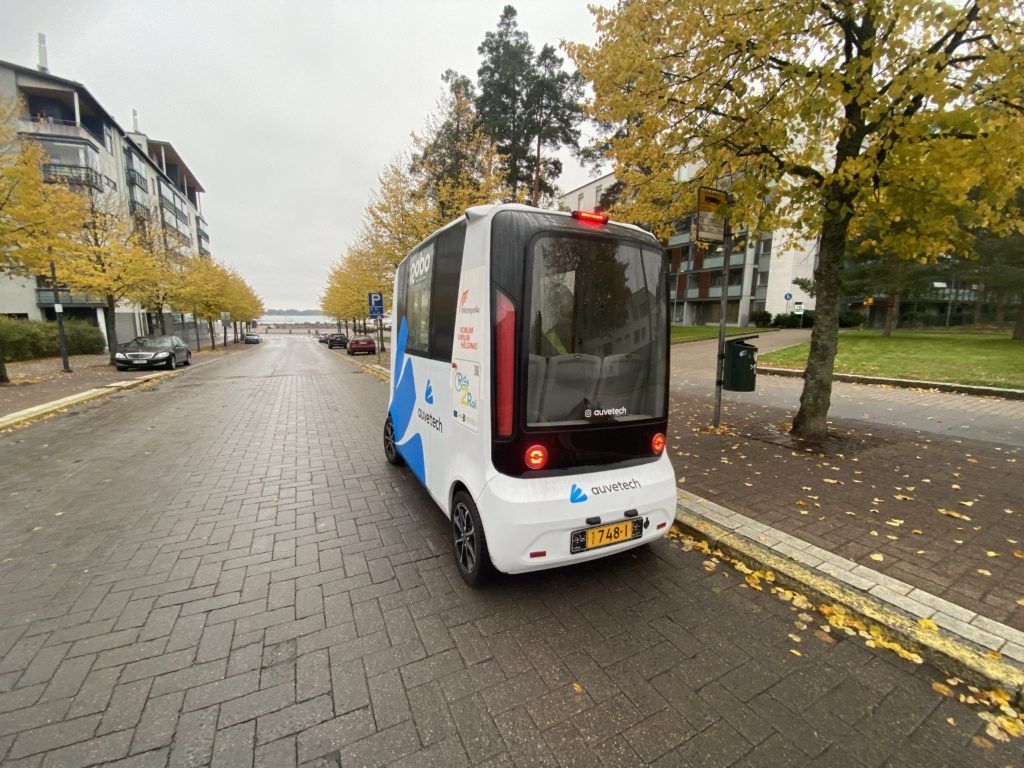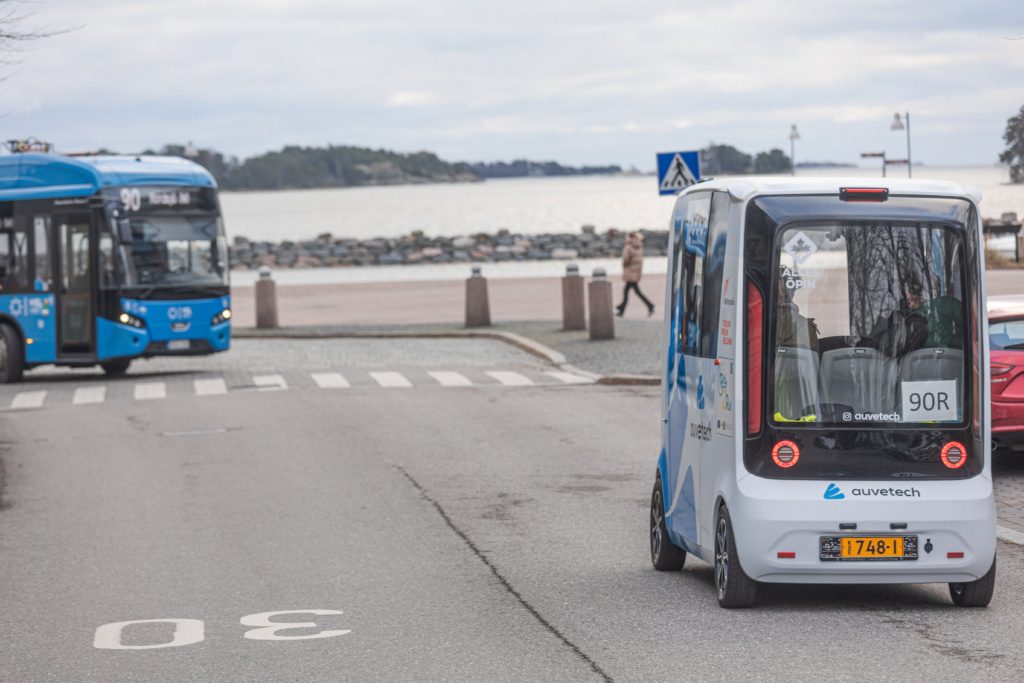Finland, Helsinki Vuosaari
An overview of how we tried to implement our shuttle into the traffic as a regular bus.
Helsinki welcomed Iseauto as a last-mile solution

The beginning
Auve Tech together with Roboride as the participants of the RIDE2RAIL project under the European Union’s Horizon program introduced sustainable transportation for the citizens of Helsinki in its biggest district – Vuosaari. Roboride reached out to us with the idea to use one of our Iseautos on the public roads of the city of Helsinki.
The main goal of this case study was to understand if the speed of the self-driving shuttle may be increased to the speed of the regular public buses. There were both advantages and disadvantages that our team experienced and learnt from the two-month project in Vuosaari district.

Operational Environment
A new bus route was specifically designed for the shuttle and was named 90R. Mixed traffic was full of pedestrians, cyclists, and cars.
The route included 5 stops. 4 bus stops were part of the perimeter of the living quarters that had to be connected with the bus stop next to the Vuosaari metro station.
The shuttle was operating according to the schedule from 8 a.m. to 12 p.m. and from 4 p.m. to 8 p.m. on working days. A 4-hour break was allotted for charging. If our partners will see the demand for autonomous transportation then Iseauto would serve for 6 hours on weekends too. The passengers could enjoy the service for free and use the bus according to the COVID regulations.
The complexity of the environment
The route included 5 stops. 4 bus stops were part of the perimeter of the living quarters that had to be connected with the bus stop next to Vuosaari metro station so the last-mile solution was introduced to the residents of Vuosaari district.
The lane included left and right turns and four roundabouts. The kindergarten was in the area too therefore the operators had to pay close attention to the inattentive kids since there were no traffic lights. Furthermore, the operators had to be attentive to the crossroads due to the yield sign.

The weather conditions
The case study took place during October and November and the weather did not meet the expectations of our team nor our partners from Roboride. The heating system in the bus did not meet the expectations of the passengers and operator. The driving itself was not affected by the weather conditions and the operating was steady.
Challenges tackled
Some challenges were faced during the project due to the long process of testing the self-driving shuttles which may bring unexpected difficulties.
As previously mentioned, there was the yield sign in the crossroads which means it was unregulated by the traffic lights. One adversity was a blind spot where cars coming from the main road could not be seen due to the winding streets.
The area Iseauto had to serve was busy and there was a need for another shuttle. The service would have improved with more shuttles in order to stay on schedule as the demand was higher than expected and the maximum capacity for a bus is 6 people.
This was the first time Auve Tech’s busses were operated by external operators. This meant ongoing communication between the Roboride team as the problems that arose were resolved remotely. Before operating, there was a week-long course for the operators on-site about how to operate the vehicle correctly. Afterward, our team returned to Estonia and supervised the project remotely.
